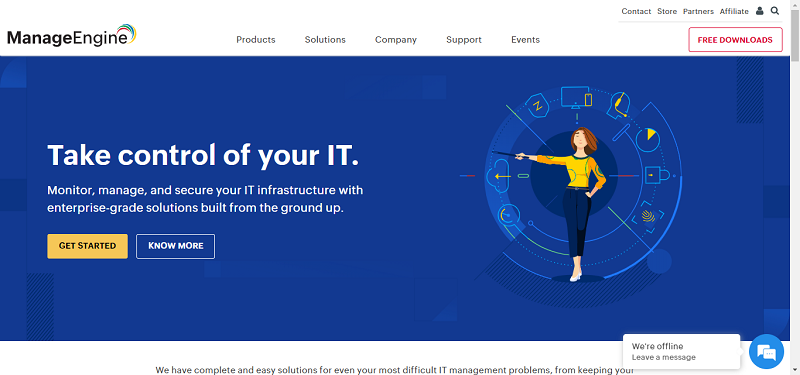In my last article I discussed the importance of conducting a comprehensive assessment of your current IT environment before deciding on any kind of a cloud strategy. To summarize: you must know exactly where you are before you can accurately chart a course to where you want to be along the IT transformation journey.
Usually, there is a clear business case for performing systematic and strategic remediation of your onsite IT environment to get it running as effectively and efficiently as possible. Unless, of course, your assessment revealed so many problems that you no longer want to operate your own IT environment and are in a position to make an immediate and total move—i.e., start over— in a cloud environment.
Your cloud environment will be a totally honest reflection of your on premise environment. That means, if your on premises environment is under- or over-utilized, your cloud environment will be as well. Simply moving an inefficient environment to the cloud will not by itself make it any more efficient.
The best approach—and the focus of this article—will be how to get the greatest payback from the information you collected during your assessment by performing remediation of inefficient systems—physical and virtual. The good news is that there are many short term benefits from remediation as part of a thoughtful strategy that ensures the upgrades you make to each component contribute to the development of a converged infrastructure. To avoid bouncing off the guardrails on your IT transformation journey you need to align each new project that crosses your desk with your long-term vision. The strategic choice might be more expensive in the short term, but nothing is as expensive as finding yourself in a technological dead-end that forces you to start over.
Let’s look at a few key topics.
Many IT directors think they are much more virtualized than they actually are. According to research, a typical IT environment is about 50 percent virtualized. That, obviously, leaves the other 50 percent to be virtualized. The ROI and other benefits of extending virtualization are well established.
Besides the need to extend virtualization, most organizations need to rationalize the systems they have virtualized. It is all too common to see where 100 physical servers have been transformed into 200 or more…sometimes many more…virtual servers.
It doesn’t take much to create them, but virtual machines have the same support, security and compliance issues that physical machines do. The cost of server sprawl, as a result, can be significant. After evaluating one organization’s virtual environment recently, for example, we told them that, if they spent some money on remediation, we would be able to charge them half of what it would cost per month if we had to manage their existing environment unchanged. The bottom line: Every dollar they invested up front would be paid back manyfold in a short period of time.
Remediation of virtual environments is directly related to remediation of management abilities through the development and execution of ITIL best practices as part of an IT service management (ITSM) strategy. We’ll return to this topic in a subsequent blog. Let’s go back to the physical enironment for a bit.
Blade Servers
Blade technology has initiated a wave of change through everything in the data center. Blades are modular, need fewer cables, require less floor space, use less power, require less cooling and can be managed by integrated management tools. These and other dramatic efficiencies enabled the blade form factor to take the data center by storm. A key advantage of introducing blades to your data center is that your investment in the blade chassis is protected over time because you can always add additional blades, unlike money spent on maintaining older technology for which there is no roadmap to the future.
Converged Storage
The prevailing tendency in most organizations has been to buy more storage than you need—“just to be sure.” Predictably, the tendency to over-buy has filled many data centers with a variety of storage devices all performing at a small percentage of their designed performance—kind of like where servers were before virtualization when the rule of thumb was a server for every application.
Ultimately, you will be able to implement a common storage platform that will make it possible to dynamically select the best storage configuration for a specific application from a menu that includes all the choices. In the meantime, organizations need to carefully select a specific storage solution that meets their current needs and leaves their future options open.
That means implemening converged storage area networks (SANs) for your virtual server farms. Converged SANs lets you assign virtual storage and provide high availability with commands from the hypervisor environment, just the way you manage virtual servers. That your attached storage is controlled and managed by hypervisor is what makes it “converged.” We do have to keep an eye on the industry and where storage is headed. Recent advancements in flash and direct-attached storage may soon provide services that were traditionally only supported through a SAN.
The ideal goal, of course, is to get everything into the converged infrastructure where you have lowest costs per port, the lowest cost for SAN storage, for compute resource…for everything, compared to a discrete physical environment; and you can take advantage of the dynamic movement, self provisioning, Scaling and all the benefits of shared resources model.
My next article will look at how to can break down the traditional silos of specialites that exist today in most IT departments like feudal baronies in constant territorial disputes with each other. To advance along the IT transformation journey, your IT team is going to have to learn to get along.
By Kevin Gruneisen





